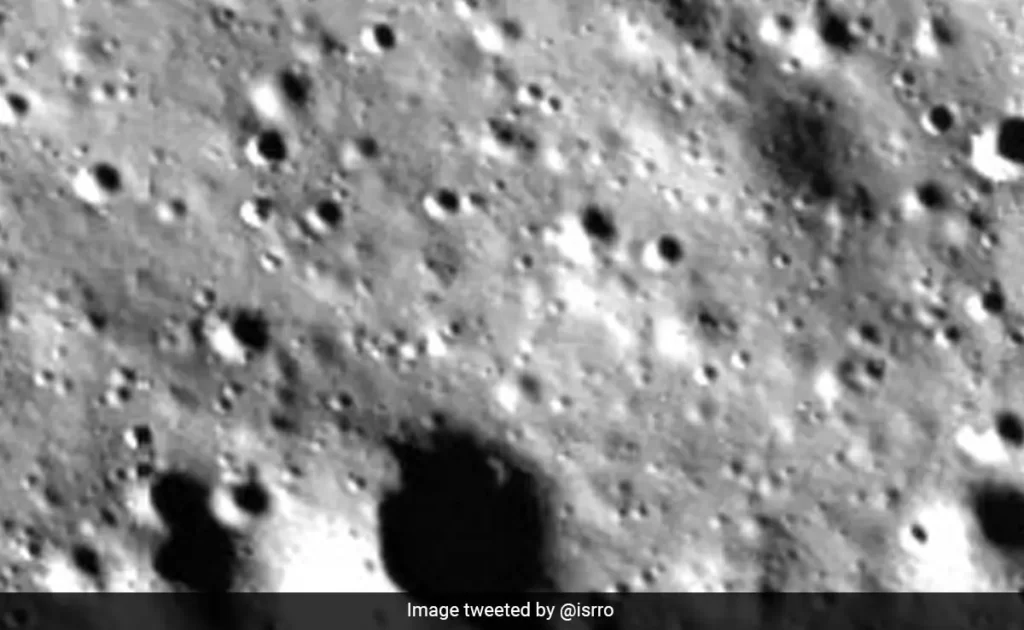Chandrayaan-3, the third lunar exploration mission by the Indian Space Research Organisation (ISRO), was launched with the goal of furthering our understanding of the Moon’s surface and its potential resources. The mission consisted of a lunar lander and rover, designed to study the lunar terrain and conduct scientific experiments. The landing near the Moon’s South Pole was a strategic decision, as this region has been of particular interest to scientists due to the presence of water ice.
Importance of Landing near the Moon’s South Pole
The decision to land near the Moon’s South Pole was a strategic one, driven by the scientific significance of this region. The presence of water ice on the lunar surface has long been a topic of interest for scientists, as it could potentially be used as a resource for future space exploration missions. By landing in this area, Chandrayaan-3 aimed to gather valuable data on the distribution and composition of water ice, which could have far-reaching implications for future missions.
Additionally, the Moon’s South Pole offers unique conditions for exploration. The region experiences long periods of sunlight, which could be harnessed for solar power generation. Furthermore, the polar craters provide areas of permanent shadow, which could potentially contain ancient ice deposits that have been preserved over millions of years. Exploring these craters could shed light on the history of the Moon and provide insights into the origins of our solar system.
Challenges Faced during the Lunar Landing
The lunar landing is one of the most critical and challenging aspects of any space mission, and Chandrayaan-3 was no exception. The precise touchdown of the lunar lander required meticulous planning and execution. The Moon’s gravitational pull, lack of atmosphere, and uneven surface presented significant obstacles that had to be overcome.
One of the key challenges was the navigation and guidance system. Accurate positioning and trajectory calculations were crucial to ensure a safe landing. Additionally, the descent phase had to be carefully controlled to avoid excessive speed or deviation from the intended landing site. Overcoming these challenges required a high level of engineering expertise and precise coordination between ground control and the spacecraft.
Success of Chandrayaan-3’s Landing near the Moon’s South Pole
Despite the numerous challenges, Chandrayaan-3’s landing near the Moon’s South Pole was a resounding success. The lunar lander touched down smoothly and precisely as planned, showcasing India’s technological prowess and the capabilities of its space program. The achievement is a testament to the hard work and dedication of the scientists, engineers, and technicians involved in the mission.
The successful landing has opened up new avenues of exploration and research. The data collected by Chandrayaan-3 will provide valuable insights into the lunar surface, water ice distribution, and the Moon’s geological history. This information will not only contribute to our understanding of the Moon but also lay the groundwork for future missions and potential colonization efforts.
Impact of the Successful Landing on India’s Space Program
The successful landing of Chandrayaan-3 near the Moon’s South Pole has had a profound impact on India’s space program. It has showcased India’s capabilities in space exploration and positioned the country as a global leader in the field. The achievement has brought great pride to the nation and has bolstered public support for further investment in space research and development.
The success of Chandrayaan-3 also holds significant economic potential. The data gathered from the mission can be leveraged for commercial purposes, such as resource extraction and utilization. This could open up new industries and create job opportunities in the space sector, further boosting India’s economy.
Reactions and Celebrations in India and Worldwide
The successful landing of Chandrayaan-3 near the Moon’s South Pole has been met with widespread celebration and admiration both in India and worldwide. The achievement has garnered attention from the international scientific community and has been hailed as a major milestone in space exploration.
In India, the achievement has been met with jubilation and pride. The success of Chandrayaan-3 has brought the nation together, with people from all walks of life expressing their joy and appreciation for the scientists and engineers behind the mission. The accomplishment has inspired a new generation of space enthusiasts and has ignited a renewed interest in science and technology.
Pictures of the Lunar Lander near the Moon’s South Pole

Significance of the Achievement for Future Space Exploration
The successful landing of Chandrayaan-3 near the Moon’s South Pole holds immense significance for future space exploration. The data collected from this mission will contribute to our understanding of the Moon’s resources, potential for sustainable habitation, and the overall dynamics of celestial bodies.
Furthermore, the success of Chandrayaan-3 serves as a stepping stone for future missions. It demonstrates India’s capabilities and paves the way for more ambitious space endeavors, including manned missions and collaborations with other countries. The achievement has also fostered international cooperation and knowledge sharing among space agencies, furthering our collective understanding of the universe.
Conclusion and Looking Ahead to India’s Future Space Missions
The successful landing of Chandrayaan-3 near the Moon’s South Pole marks a significant milestone in India’s space program. It underscores the country’s commitment to scientific exploration, technological advancement, and global collaboration. The achievement has brought pride and inspiration to the nation and has set the stage for even more ambitious space missions in the future.
As India looks ahead, the focus will be on furthering our understanding of the universe, harnessing space resources, and pushing the boundaries of human knowledge. With each new mission, India’s space ambitions will continue to soar high, contributing to the collective efforts of humanity to unravel the mysteries of the cosmos.
